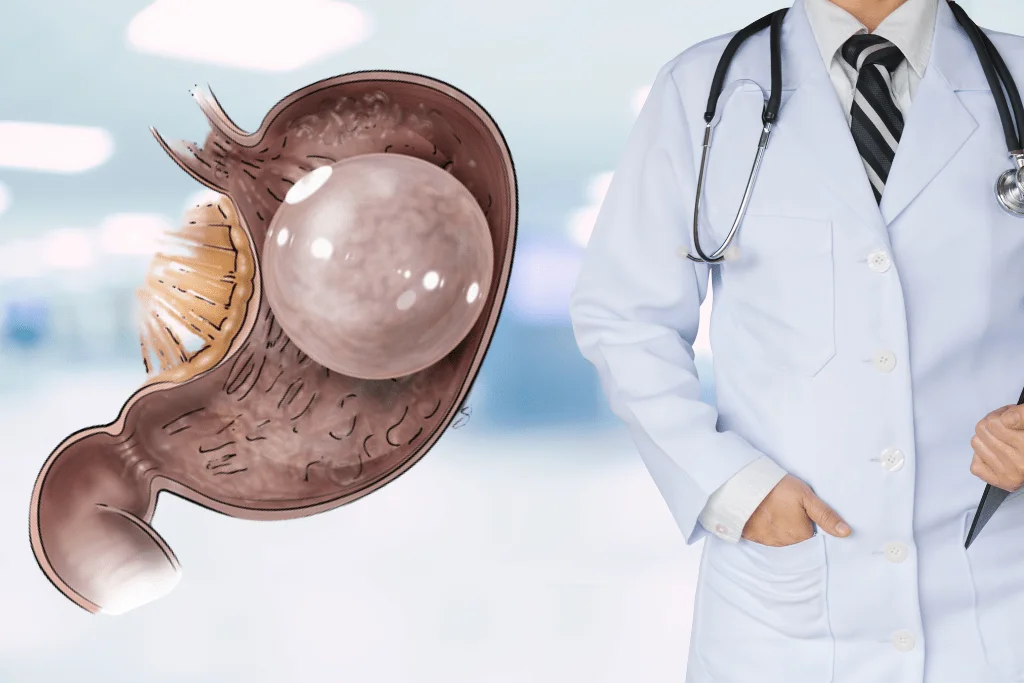The Allurion Balloon has emerged as a popular non-surgical weight loss solution in Dubai, offering individuals a new way to manage their weight without the need for invasive procedures. While the balloon itself is designed to facilitate weight loss by promoting a feeling of fullness, understanding post-procedure care is crucial for achieving optimal results. This article provides essential insights into navigating post-procedure care for the Allurion Balloon Cost in Dubai, ensuring a smooth recovery and successful weight loss journey.
Understanding the Allurion Balloon Procedure
Before delving into post-procedure care, it’s essential to understand what the Allurion Balloon is and how it works. The Allurion Balloon is a soft, saline-filled device that is swallowed in a deflated state within a gel capsule. Once ingested, the capsule dissolves, allowing the balloon to expand in the stomach. This process creates a sensation of fullness, helping individuals reduce their food intake and achieve weight loss. The balloon remains in place for about six months, during which time patients are encouraged to adopt healthier eating habits and engage in physical activity.
Immediate Post-Procedure Care
Recovery Process
Following the Allurion Balloon procedure, patients typically experience a brief recovery period. Most individuals can return home the same day, as the insertion process is minimally invasive and takes less than 30 minutes. However, it's essential to rest and allow the body to adjust to the presence of the balloon. Patients are advised to avoid strenuous activities for at least 24 hours post-procedure.
Managing Discomfort
Some patients may experience temporary side effects such as nausea, bloating, or abdominal discomfort. These symptoms are generally mild and should subside within a few days. To alleviate discomfort, patients can:
- Stay Hydrated: Drinking clear fluids can help ease nausea and bloating.
- Eat Small, Frequent Meals: Gradually reintroducing solid foods in small portions can minimize discomfort and promote easier digestion.
- Avoid Carbonated Drinks: Carbonated beverages can increase bloating and should be avoided during the initial recovery period.
Dietary Recommendations
Transitioning to Solid Foods
After the procedure, patients will follow a specific dietary plan to facilitate a smooth transition from liquids to solids. Initially, individuals are advised to stick to clear liquids for the first 24 to 48 hours. This includes broth, herbal teas, and clear juices. Once comfortable, patients can progress to soft foods, such as:
- Pureed vegetables
- Mashed fruits
- Yogurt
- Oatmeal
After a few days, individuals can gradually introduce more solid foods, focusing on nutrient-dense options that promote satiety without excessive calorie intake.
Adopting Healthy Eating Habits
Long-term success with the Allurion Balloon relies heavily on adopting healthier eating habits. Patients are encouraged to:
- Practice Portion Control: Eating smaller portions can help individuals adjust to the reduced appetite that the balloon promotes.
- Incorporate Whole Foods: Focusing on fruits, vegetables, lean proteins, and whole grains can enhance nutritional intake and support weight loss.
- Stay Mindful: Mindful eating practices, such as chewing slowly and savoring each bite, can enhance satisfaction and help prevent overeating.
Incorporating Physical Activity
Importance of Exercise
Regular physical activity is a crucial component of post-procedure care for the Allurion Balloon. While the balloon helps control appetite, engaging in exercise can further enhance weight loss results and improve overall health. Patients are encouraged to:
- Start Slowly: Begin with light activities, such as walking, and gradually increase intensity as the body adjusts.
- Set Realistic Goals: Establish achievable fitness goals to stay motivated and track progress.
- Find Enjoyable Activities: Engaging in enjoyable physical activities can make exercising more sustainable and rewarding.
Regular Follow-Up Appointments
Importance of Monitoring Progress
Patients are typically scheduled for follow-up appointments with their healthcare provider to monitor progress and ensure that the Allurion Balloon is functioning as intended. These appointments provide an opportunity to discuss any concerns, receive dietary and lifestyle guidance, and adjust weight loss strategies as needed.
Adjusting the Plan
During follow-up visits, healthcare providers can assess weight loss progress and make recommendations for adjustments to diet and exercise plans. It’s essential to stay open to feedback and utilize these appointments to maximize the benefits of the Allurion Balloon.
Dealing with Potential Challenges
Recognizing Side Effects
While many patients experience positive outcomes with the Allurion Balloon, some may encounter challenges during their weight loss journey. Common issues include:
- Persistent Nausea: If nausea persists beyond a few days, patients should consult their healthcare provider for advice.
- Unanticipated Weight Loss: While weight loss is the goal, losing too much weight too quickly can be concerning. Patients should communicate any significant changes in weight to their healthcare team.
Seeking Support
Support from healthcare professionals, friends, and family can play a vital role in navigating the post-procedure experience. Patients are encouraged to seek out support groups, online communities, or counseling services to share experiences, seek advice, and stay motivated.
Conclusion
Navigating post-procedure care for the Allurion Balloon is essential for achieving long-term weight loss success. By following dietary recommendations, incorporating physical activity, and attending regular follow-up appointments, individuals can maximize the benefits of this innovative weight loss solution. With the right approach and support, the Allurion Balloon can significantly enhance one’s journey toward a healthier lifestyle in Dubai.





Comments